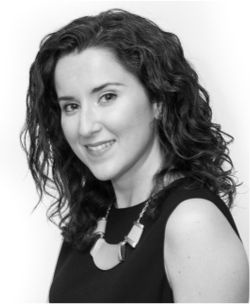“I'm happy to dive into how we can optimize our orgasmic potential because it's such a huge component of health, and I don't want to underscore that. I think we always have this kind of cutesy, like, oh, my orgasm—but no, your orgasm is such a huge biohack. The health benefits are numerous, from balancing your hormones, boosting your immune system, slowing down biological aging, boosting skin collagen. I mean, I can go on and on.
First of all, let's get some vocabulary dialed in. We use the words orgasm and climax interchangeably. And that is a problem because climax is the end of the process. That's why we call it the climax. Orgasmic plateau is what I'm going to talk a lot about in a moment. And this is a thing that is super, super important. Climax is not as important for you as the orgasmic plateau. And then there's another step before that, which is tumescence, which is a beautiful word you should know about. Tumescence is the female version of an erection, so it's blood vessel dilation in the erectile tissue of the labia and the clitoral structure. And then after climax, there's something called the refractory period where blood circulation to that erectile tissue constricts a little bit, nerve endings calm down, you have an opportunity to start fresh with your next tumescence and orgasmic plateau. That's important to know because so many of us have been conditioned to think about our climax in a pornographic view, which is that we should get there really quick, we should be in the mood, we should be lubricated, and we should be quick to climax.
But this whole process of tumescence, of orgasmic plateau, of climax, and of the refractory period can be 45 minutes. So what we need is time and space to get our full process handled. I think the most important thing that you could take away from this conversation is don't rush. Understand where you are in your cycle and what is going to be needed for you to be in the mood, and then take the time that it takes to give yourself that full journey.
“Understand where you are in your cycle and what is going to be needed for you to be in the mood, and then take the time that it takes to give yourself that full journey.”
So let me help you understand how to make the most of your orgasmic plateau. The technique here that is needed is called an edging technique. Let’s think of this all on a scale of 1 to 10, 10 being climax. 1 to 5 I’m going to suggest is your tumescence journey, so you’re kissing, you’re getting in the mood, there’s not necessarily any direct stimulation of the clitoris taking place during tumscence, necessarily. It's everything else that's helping you feel aroused and where blood circulation is happening. More of the foreplay is good here.
Then once the approach happens to the clitoris, first of all, you also need to know if you're in a wet phase or a dry phase, because we all have this assumption that we should be lubricated. If you are in the wet phase, right, where you are in ovulation or the luteal phase, then you may not need lubricant. If you're in the dry phase, follicular or menstrual, you will absolutely need lubricant before you approach the clitoris, don't think you're going to get there. Bring the lube, because any friction is going to create pain, is going to sort of shut down this whole process. You don't want to do that.
So approaching the clitoris is happening. Start slow, start gentle, and breathe fully into the pelvis, into the chest cavity, back, front, everywhere you can. And what you want to do is feel the experience. You're going from a 5 to a 6 to a 7 to an 8. Maybe slow down, change your position, change what you're doing. Slow down the tempo of how you're stimulating yourself or your partner is stimulating you, and slow down so you get things back down to a 7 and a 6, and then go back up again to an 8 and back down again to a 6. And this can be something that you do over the period of 10 to 20 minutes.
Why would you want to expand this orgasmic plateau phase? Well, during your orgasmic plateau, you produce a tremendous amount of oxytocin and nitric oxide. Nitric oxide was the 1992 molecule of the year on which Viagra was based, it's a magical thing which you can nerd out on. This is the molecule that confers all those health benefits and hormone balancing benefits. You want to make as much of that as possible. Rushing to climax, where you do make some there, bypasses the majority of what you could be making. So this is why I'm not a huge fan of vibrators all the time. I do think they have their place and time in your practice.
“Why would you want to expand this orgasmic plateau phase? Well, during your orgasmic plateau, you produce a tremendous amount of oxytocin and nitric oxide.”
If you want to have at least a once a week practice where you are either self pleasuring or your partner is working on that with you, and you're doing it for the purposes of expanding your orgasmic plateau phase for at least 10 before you let the edging process stop, and you continue to stimulate until you get to the 9 and the 10 and then you have your climax. It's such a valuable practice. It will change your health, it will change your relationship to your whole orgasmic experience. It will be a very different reality for you in the right kind of way.
I think this is the kind of sex ed that we all were missing. People always ask me, how would you redo sex ed? Well, helping women understand how their cycle affects their libido, how their process works—it's the keys to your ignition, literally, and knowing how to work that is just so essential to your well being in every way.”
Need help improving your sexual wellness? Our natural libido supplement, Sex Dust, is perfect for balancing hormones and supporting libido! Try it out at Moon Juice.
Sign Up, Nerd Out
Get wellness tips, education, and recipes
delivered straight to your inbox.
Get wellness tips, education,
and recipes delivered
straight to your inbox.
Want more? This is an excerpted transcript from our interview with Alisa Vitti, HHC — listen or watch here!












